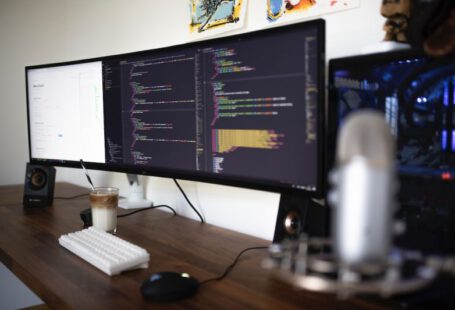With the rapid advancement of technology, the world of user interface (UI) and user experience (UX) design is constantly evolving. One of the most promising and exciting developments in this field is the emergence of augmented reality (AR) and virtual reality (VR) technologies. These immersive technologies have the potential to revolutionize the way we interact with digital interfaces, opening up new possibilities and challenges for UI/UX designers.
The Rise of AR and VR
AR and VR technologies have been gaining traction in recent years, with major tech companies like Apple, Google, and Facebook investing heavily in their development. AR involves overlaying digital information onto the real world, while VR creates a completely immersive digital environment. Both technologies offer unique opportunities to enhance the user experience and create more intuitive and engaging interfaces.
Enhancing User Engagement
One of the key advantages of AR and VR is their ability to enhance user engagement. By immersing users in a virtual or augmented environment, these technologies can create a more compelling and memorable user experience. For example, VR can transport users to a different time or place, allowing them to explore and interact with digital content in a way that was previously impossible. AR, on the other hand, can overlay digital information onto the real world, providing users with additional context and interactivity.
Designing for Spatial Interaction
AR and VR also introduce new challenges and considerations for UI/UX designers. Traditional UI design focuses on 2D screens and interactions, but with AR and VR, designers need to think in terms of 3D space. This requires a shift in mindset and the adoption of new design principles. Designing for spatial interaction involves considering factors such as depth, scale, and movement, as well as the user’s physical environment. It also requires a more intuitive and natural approach to user interactions, such as using gestures or voice commands instead of traditional buttons and menus.
Creating Immersive Experiences
Another aspect of AR and VR design is the creation of immersive experiences. In addition to visual elements, designers need to consider other sensory inputs, such as sound and haptics, to create a fully immersive environment. This requires a multidisciplinary approach, involving collaboration with audio engineers, 3D modelers, and other specialists. By integrating these different elements, designers can create experiences that engage multiple senses and provide a more realistic and engaging user experience.
The Future of UI/UX Design
As AR and VR technologies continue to evolve and become more accessible, they are likely to play a significant role in the future of UI/UX design. These technologies offer new ways to interact with digital content and have the potential to transform various industries, such as gaming, education, and healthcare. However, there are still challenges to overcome, such as hardware limitations and the need for more intuitive and user-friendly interfaces.
Conclusion: Embracing the Future of UI/UX Design
In conclusion, AR and VR are poised to drive the next wave of UI/UX design. These immersive technologies offer exciting opportunities to enhance user engagement and create more intuitive and immersive experiences. However, designing for AR and VR requires a shift in mindset and the adoption of new design principles. As technology continues to evolve, UI/UX designers will need to adapt and embrace these new tools and techniques to stay at the forefront of their field. By doing so, they can create experiences that truly push the boundaries of what is possible in the world of digital interfaces.





